Hair Loss - Causes, Symptoms, Types, & Treatment
Hair loss is a common condition that affects many people, and it can be caused by a variety of factors. In this article, we'll explore everything you need to know about hair loss, including its causes, symptoms, diagnosis, and treatment options.
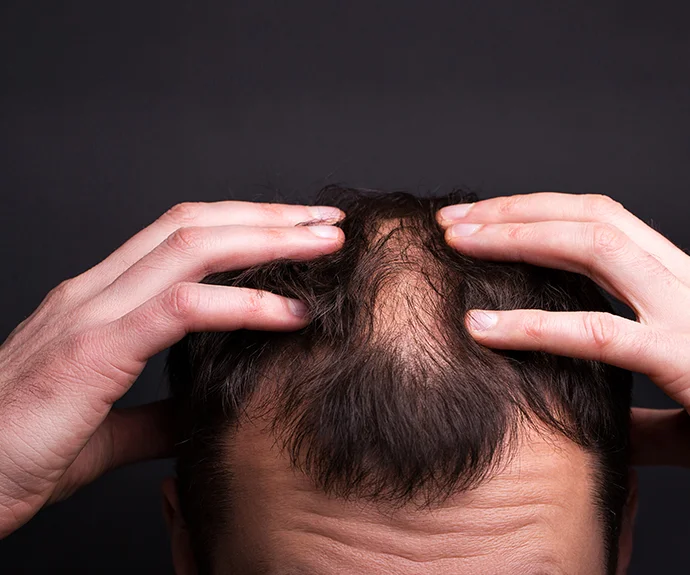
WHAT IS HAIR LOSS?
Hair loss, also known as alopecia, is a condition in which hair falls out from the scalp or other parts of the body. It can be temporary or permanent and can affect people of all ages and genders. Hair loss can cause emotional distress and a negative impact on self-esteem.

TYPES
Androgenetic Alopecia
This is a hereditary condition that affects both men and women and is caused by the hormone dihydrotestosterone (DHT) which affects hair follicles.
1
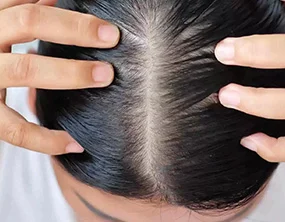
Alopecia Areata
This is an autoimmune disorder that causes hair to fall out in patches.
2
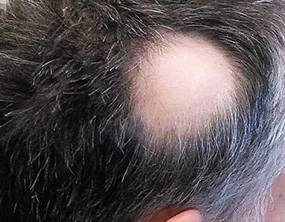
Telogen Effluvium
This type of hair loss occurs when there is a disruption in the hair growth cycle, resulting in more hair than usual in the resting phase, leading to hair fall.
3
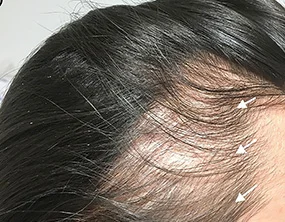
Traction Alopecia
This type of hair loss is caused by repeated tension on the hair, typically due to tight hairstyles.
4
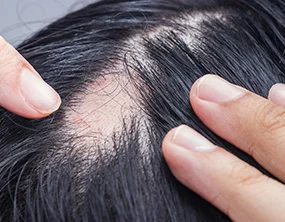
Scarring Alopecia
This type of hair loss is caused by scarring on the scalp and can result in permanent hair loss.
5
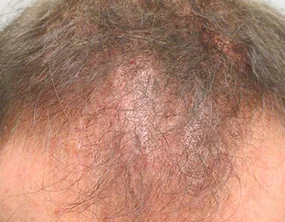
CAUSES
- Hormonal changes, genetic issues, and stress
- Medical issues such as thyroid disorders, autoimmune disorders, and alopecia areata.
- Chemotherapy
- Nutritional deficiencies
- Tight braids or weaves
SYMPTOMS
- Thinning of hair on the scalp or other parts of the body
- Bald patches or complete baldness
- Itching or burning of the scalp
- Hair falling out in clumps
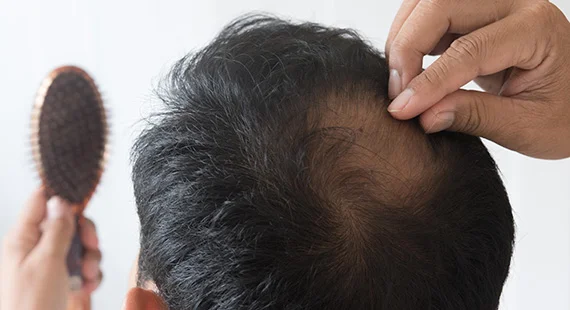
DIAGNOSIS
To diagnose hair loss, a dermatologist or trichologist will examine the scalp and hair and review the medical history of the patient. Tests such as blood tests, scalp biopsy, and trichoscopy may also be performed to identify any underlying causes of hair loss.
DO's
DONT's
TREATMENTS
Topical Treatments
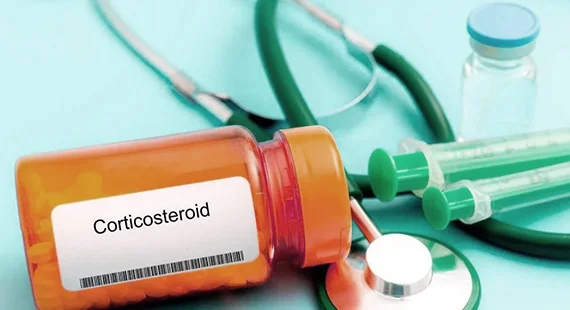
Applying corticosteroids to the scalp reduces inflammation and promotes hair growth.
Hair transplant surgery

Hair transplant surgery involves taking hair follicles from one part of the scalp and transplanting them to the balding areas.
Laser therapy

Low-level laser therapy is a non-invasive treatment that can help stimulate hair growth.
PRP therapy
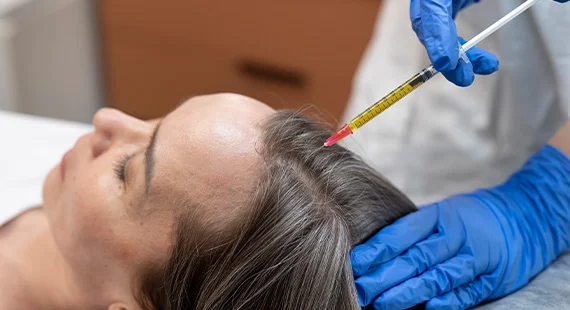
Platelet-rich plasma therapy involves injecting the patient's own platelets into the scalp to stimulate hair growth.
RISKS AND COMPLICATIONS
- Psychological distress and depression
- Scalp more vulnerable to sunburn and skin damage
- Increased risk of scalp infections
- Wound healing complications
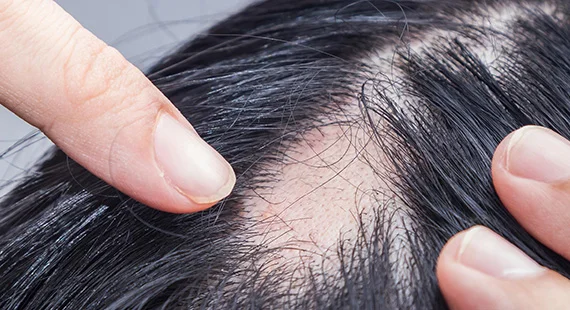
IF LEFT UNTREATED
If hair loss is left untreated, it can lead to a variety of negative effects on the scalp and overall hair health, such as,
- Thinning hair: Hair loss can result in thinning hair, making it difficult to style and leading to a less full appearance.
- Bald patches: In some cases, hair loss can result in bald patches or complete baldness in certain areas of the scalp.
- Itching and irritation: As hair falls out, it can cause itching and irritation on the scalp.
- Decreased self-esteem: Hair loss can have a significant impact on one's self-esteem and confidence, particularly if it is noticeable or occurs at a young age.
COST
Topical treatments: 500 to 2,000 INR per month
Oral medications: 1,500 to 5,000 INR per month
Hair transplant surgery: 60,000 to 2,00,000 INR per session
Financial Options

INSURANCE COVERAGE
In most cases, treatment costs for hair loss are not covered by health insurance, as it is considered a cosmetic concern rather than a medical necessity.

KNOW MORE ABOUT HAIR LOSS
Hair loss is a common problem that affects both men and women. It can be caused by a variety of factors, including genetics, hormonal imbalances, stress, poor nutrition, and certain medical conditions. But whatever the cause, dealing with hair loss can be a frustrating and difficult experience.
So, what can you do to prevent hair loss? Firstly, it's important to maintain a healthy diet and lifestyle. Eating a balanced diet rich in vitamins and minerals, as well as getting enough sleep and exercise, can help to promote healthy hair growth. Additionally, using gentle hair care products and avoiding harsh styling techniques can help to prevent damage to your hair.
In addition to these preventative measures, there are also many treatments and products available to help combat hair loss. Topical treatments, such as hair serums and hair oils, can help to stimulate hair growth and prevent further loss. Hair transplant surgery is also a popular option for those looking to restore lost hair. This procedure involves transplanting healthy hair follicles from one area of the scalp to another, resulting in a fuller, more natural-looking head of hair.
At Glamyo Health, we understand the impact that hair loss can have on your self-confidence and overall well-being. That's why we offer a range of hair restoration treatments to help you achieve a fuller, more youthful-looking head of hair.
One of the most effective treatments we offer is hair transplant surgery. Our experienced team of hair restoration specialists use the latest techniques and technologies to ensure natural-looking results that meet your individual needs and goals. We also offer non-surgical hair restoration treatments, such as PRP therapy, which involves injecting platelet-rich plasma into the scalp to stimulate hair growth.
In addition to our hair restoration treatments, we also offer a range of other services to help you look and feel your best. From cosmetic surgeries such as liposuction and breast augmentation to non-invasive treatments like Botox and dermal fillers, we have everything you need to achieve your aesthetic goals.
At Glamyo Health, we are committed to providing our clients with the highest level of care and service. Our team of experienced and knowledgeable professionals will work with you to create a customised treatment plan that is tailored to your unique needs and goals. We also provide you with our happy patient reviews to know their journey throughout the treatment.
So if you're struggling with hair loss, let Glamyo Health help you achieve a fuller, more youthful-looking head of hair. Contact us today to schedule a consultation and learn more about our services.
 New Delhi
New Delhi  Bangalore
Bangalore  Mumbai
Mumbai  Hyderabad
Hyderabad  Pune
Pune  Chennai
Chennai 
